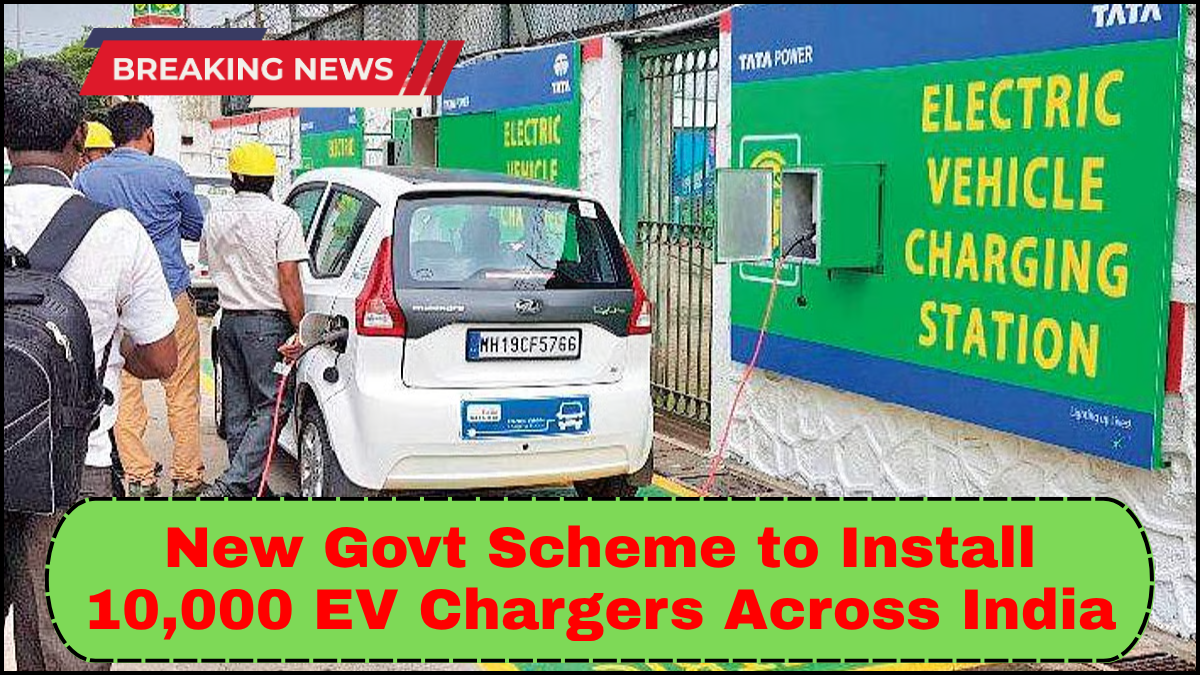India is accelerating toward a greener, more sustainable future with the announcement of a Govt Scheme 2025 to install 10,000 EV charging stations across the country. This large-scale initiative aims to reinforce the nation’s electric mobility infrastructure, encourage EV adoption, and reduce dependency on fossil fuels. Backed by the central government and coordinated with state authorities and private stakeholders, this policy marks a decisive move to close the infrastructure gap for electric vehicles.

Why This Scheme Matters Now
The electric vehicle (EV) revolution in India has been picking up pace, but one persistent bottleneck has been the lack of accessible and reliable EV charging stations. While EV sales are growing year over year, many consumers remain hesitant due to concerns about charging availability, range anxiety, and inconsistent infrastructure, especially in semi-urban and rural areas.
The Govt Scheme 2025 directly targets these issues. By rolling out 10,000 new EV chargers, the government is not just expanding the physical infrastructure—it’s also sending a clear message of long-term commitment to clean mobility.
Key Features of the Govt Scheme 2025
-
Nationwide Coverage: The chargers will be deployed across major highways, urban hubs, and underserved Tier II and Tier III cities. This ensures uniform growth of the EV ecosystem and avoids lopsided development.
-
Public-Private Partnerships (PPP): The initiative is being executed through strategic collaborations between government agencies and private sector players. This model is expected to speed up implementation and ensure technical excellence.
-
Smart Charging Technology: The stations will support both AC and DC fast-charging options and integrate with mobile apps for real-time availability, pricing, and booking. This smart approach will improve user experience and optimize grid usage.
-
Incentives for Local Manufacturing: To boost domestic industry, the scheme includes incentives for companies manufacturing chargers locally under the Make in India initiative. This adds an economic boost alongside environmental benefits.
Impact on EV Charging Stations in India
The implementation of this scheme will dramatically increase the availability of EV charging stations in India, reducing range anxiety and making electric vehicles a more practical option for daily commuters, commercial fleets, and inter-city travelers. It also aligns with India’s long-term climate goals and its commitment to reduce carbon emissions under international agreements.
This expansion will likely catalyze an increase in EV sales, as better charging infrastructure eliminates one of the main barriers to adoption. Moreover, it sets the foundation for future innovations in battery technology, smart grid integration, and vehicle-to-grid (V2G) capabilities.
Examples of Strategic Locations
-
High-Density Metro Areas: Cities like Delhi, Mumbai, Bengaluru, and Hyderabad will see high-density charger deployment in malls, office complexes, and public parking zones.
-
National and State Highways: To support long-distance travel, chargers will be set up every 25–30 km on major transport corridors.
-
Rural and Semi-Urban Zones: Special incentives will promote installation in less profitable areas, ensuring no region is left behind in the EV transition.
Policy Synergy and Future Expansion
This scheme complements earlier initiatives like FAME II and the PLI (Production Linked Incentive) scheme. While those focused on vehicle subsidies and manufacturing incentives, the Govt Scheme 2025 fills the infrastructure gap. Future phases are expected to add another 20,000 chargers over the next five years based on demand analytics and user behavior data.
India is also working on standardizing charging protocols and interoperability among providers, ensuring users can charge any vehicle at any station without technical limitations or payment hurdles.
FAQs
Q1. Who will manage the installation and maintenance of the new EV charging stations?
The installations will be managed through a mix of public and private sector agencies. The government will provide initial funding and policy support, while private companies will handle operations and maintenance under performance contracts.
Q2. Will these chargers be compatible with all EVs?
Yes, the chargers will adhere to Bharat DC and Bharat AC standards, along with support for global protocols like CCS and CHAdeMO, ensuring compatibility with most EVs in India.
Q3. When will the first phase be completed?
The first 5,000 chargers are expected to be operational by the end of 2025, with the remaining phased in by mid-2027.
Q4. How will this scheme help the common citizen?
It makes EV ownership more practical by addressing charging accessibility, potentially lowering fuel costs, and supporting cleaner air in urban centers.
Q5. Will rural areas benefit from this scheme?
Yes, the plan includes specific provisions and subsidies to encourage charger deployment in underserved rural and semi-urban areas.
click here to learn more